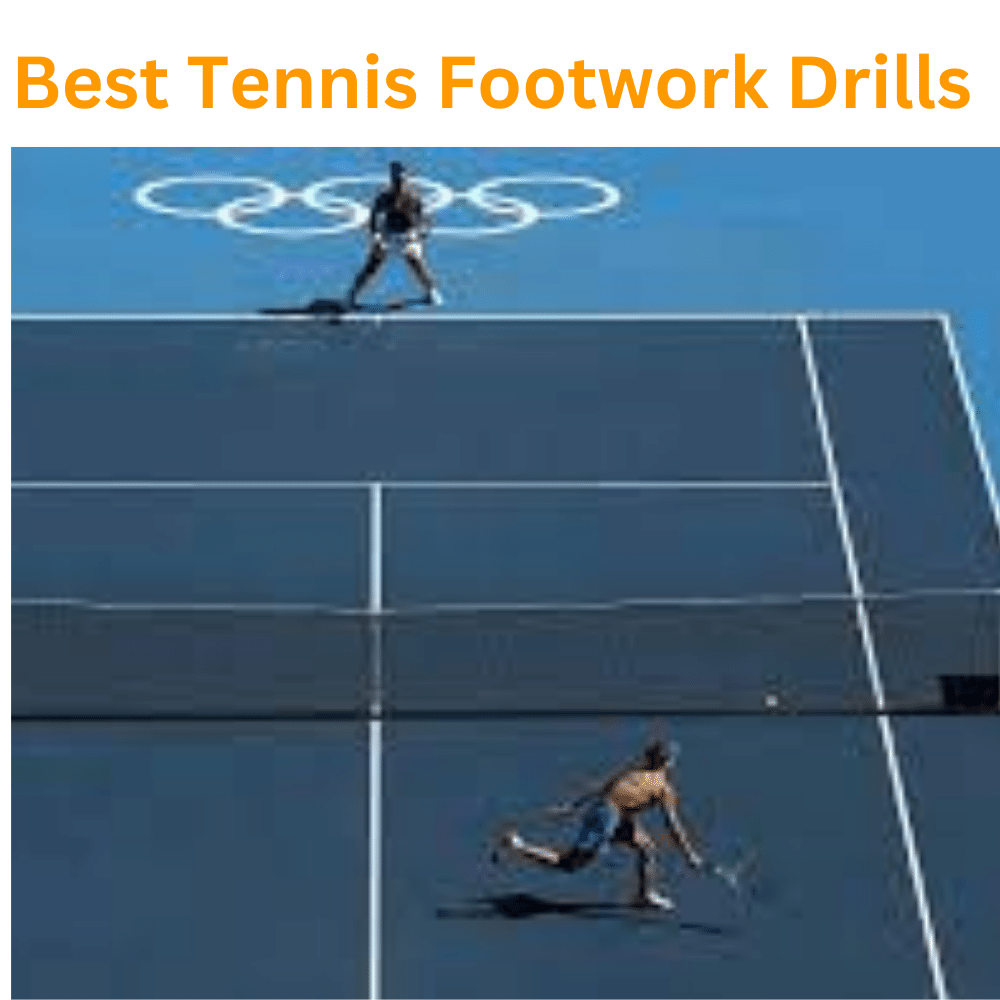Do you think only tennis ball-hitting techniques are enough to make you a good tennis player? A big No, as an expert or coach I suggest that players should work on their footwork also. Now you are thinking why footwork? It is necessary if you are a sportsman. Here are the best 5 tennis footwork drills that will help you out in maintaining the right balance and position while hitting the ball.
Working on your footwork is as important as hitting the balls at the right time. If you are a beginner or an intermediate level of tennis, you can’t afford to skip doing your footwork drills. In this article, we will guide you with the five best tennis footwork drills you need to follow consistently to become a tennis expert, so stay with us and let’s begin!
Importance of Tennis Footwork Drills:
Tennis footwork drills are an essential part of your practice routine. We recommend you focus on your footwork drills and get an advantage over your competitor while playing tennis.
- We can see revolutionary improvement in a player’s whole performance with the development of skillful footwork.
- The more proficient you get with your footwork, you will unintentionally make fewer mistakes.
- You can go past your backhand and play a good forehand with skillful footwork.
- Having great footwork will help you keep your balance while striking the ball.
- We recommend it because young athletes should work on developing their quickness and responsiveness.
- You won’t have to worry about getting into a bad swinging position because of being too near to the ball if you’re moving correctly.
The following are three things you should keep in mind while playing:
- If you feel your feet aren’t moving quickly enough throughout the play, you can try workouts in the time between points for better results.
- It is best to make modest adjustments when playing in windy situations as the gusts blow about the ball.
- You should know the difference between your movements on a hard, clay, and grass court.
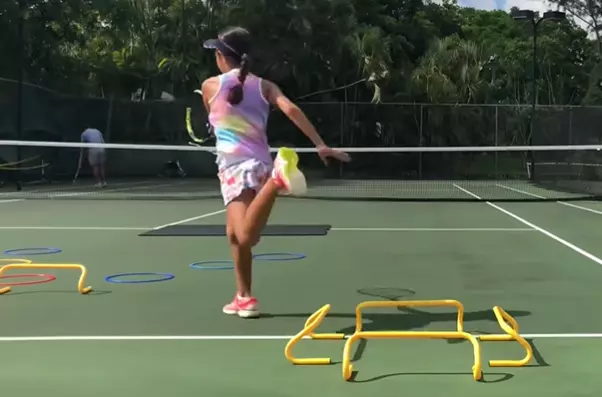
5 Tennis Footwork Drills
After describing the importance of footwork drills, we will begin with different drills you can easily do.
1. Ladder Drills:
There are 5 different ladder drills that we recommend for tennis players. Each of the five ladder footwork routines will be described in detail below so that you can begin practicing them immediately with confidence.
Skill Builder 1 – The Single-Step
The first drill is a simple one-step move. It is the most straightforward and basic drill. You’ll need to take a one-step forward with your right foot and then step backward with your left foot. Make sure the first movement is done on the heel of your front foot, which will allow you to get a good base for the second step. With each stride, let your arms swing freely to the front and back from their natural position at your sides. We recommend doing this drill with both feet.
The goal is to keep your weight in the right place, so once again, ensure that your feet are flat on the ground at all times.
Quick Footwork Exercise No. 2
This is an excellent drill for moving quickly and aggressively, especially when you need to change direction quickly. The drill is simple: Position yourself such that you are facing the ladder and your feet are sagging. If you want to take one step forward and one step back, you should start by pushing off with your back foot and then stepping into the first square with your front foot.
The same foot should lead the way down the ladder each time, while the arms should remain at the side and pulse. You can repeat this drill starting with your other foot. This drill will build your footwork and allow you to practice your quickness while working on your technique.
Third Exercise – Side Step
You can do this drill as often as you want or once if you’re short on time. For this drill, we can start positioning ourselves on the side of the ladder, with our rear foot forward, and then push off. Put our leading foot in the first square and let our other foot naturally fall into place behind it. The ladder is completed by planting the heel, pushing off with the toes, and stepping forward into the next square. As we recommend, you should repeat this drill starting with your other foot.
Step Four – The Side Hop
The Side Hop is a great drill for developing your lateral movement and footwork. It’s also a great drill to improve your balance and maintain your split step and body control.
To perform this drill, put the ladder in front of you and put your feet together to begin at the bottom. To complete the ladder, one must first hop with both feet to land outside the first square, then hop again, so both feet land simultaneously inside the first square.
Repeat this exercise again.
Practicing the Crossover Position
The crossover drill is one of the easiest footwork drills to master. It’s a drill that works on your body’s natural stride and helps you develop a strong base.
When doing this drill, keep your weight on your heel and forefoot. Assume a side-on position at the bottom of the ladder to begin. You should cross your rear foot over your front one and step into the first square; then, your other foot should cross over your first one, walk into the second square, and so on, all the way down the ladder. The crossover drill can also be done with a partner who mirrors your movements. This will help you get used to ensure that your weight stays on your heel and forefoot.
Read more: How Many Calories Does Tennis Burn
2. Leaps and Bounds Laterally:
You should only try this move once you’ve warmed up thoroughly. Until you feel confident in side-to-side leaping, you should practice with nothing more than a line on the floor. you can follow these steps for perfect leaps and bound laterally.
- It would help if you squatted as low as you comfortably can, with your feet no more than hip-width apart. Keep your center of gravity low.
- When starting your leap, shift your weight to your toes and push upward and out to the side in a frantic effort to cross the finish line first. When you land, stoop deeply to lessen the impact. Jump back and forth over the line many times while maintaining your hips and shoulders in a straight line. You may switch up your landing by landing on one foot at a time and bouncing back up onto both, or by landing on one foot and bouncing up onto both in a quick double-step.
- Act for 30-60 second bursts. Workouts should consist of three sets, followed by a 90-second rest period. Consider incorporating them into a circuit training program.
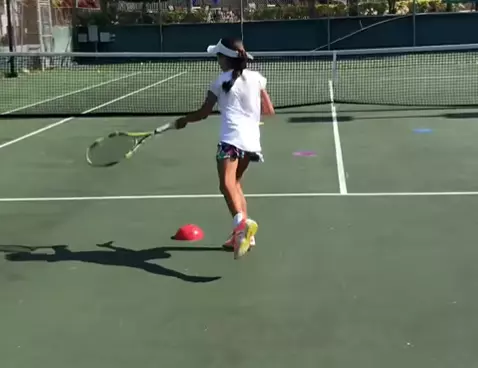
3. Knees Workout:
We can include the high knees exercise in various routines due to its practicality and adaptability.
There are various exercises included in the knee workout. We will talk below a few but the most effective of them. We have to complete 8-15 reps of each exercise for 2-3 sets. The last repetition should feel muscle tiredness, but that’s nothing to worry about.
Squats with one leg in the box:
This is also simple. All we need is to hold our opposite leg a few inches above the ground as we balance on one foot. Put your arms out in front of you for stability. Lastly, drop your body to the bench in a controlled manner while maintaining your knees steady and your hips level. You may use one or both of your legs to get back up.
Squats with a split, Bulgarian style:
We can practice this Bulgarian style in the Court by doing these steps:
First, we have to raise the rear leg and bring the front foot level with the knee, a yard in front of you. And secondly, we have to keep our front leg planted firmly as we slowly descend our body to the floor.
Deadlift with one leg alone:
Start with loosening your kneecap while you stand on your plated foot. Keep your torso upright, and your hips level as you gently bend at the hips. Allow your arms to fall to the bench until you feel a cramp in your hamstring. Slowly return to the beginning position.
Hip thrust with one leg alone:
Make sure the bench is positioned such that it’s beneath your shoulder blades when you relax. Raise one leg while keeping the other on the ground at a right angle to the body (approximately 90 degrees). Always keep your chin tucked and your gaze focused inward. Raise your hips off the ground by contracting your glutes until your thighs are perpendicular to the floor.
Jumping squats:
Since tennis is such a fast-paced activity, we can supplement our strength training with explosive motions. If you want to improve your strength and stamina, squat jumps are a fantastic way to do it. Squat down with your feet hip-width apart. Then, fully stretch your knees before launching yourself into the air. Recover for the following leap by squatting when you land.
Abduction of the hips when supine:
While lying on your side, let your upper leg drop straight to the floor. Maintain a straight line from your shoulders to your knees. Raise the leg as high as you can without moving your pelvis. When done on a bench, the lateral hip muscles work more extensively.
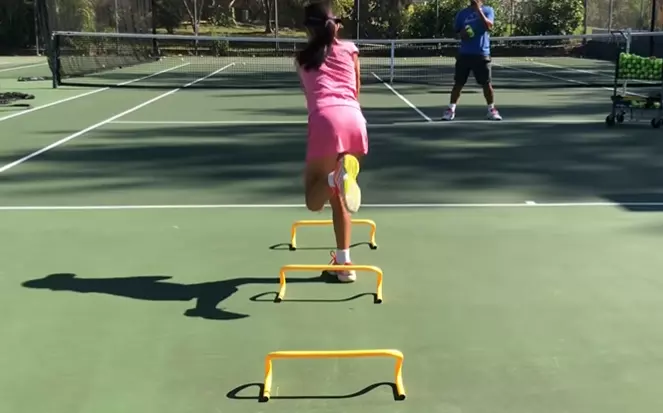
Warm-up:
Warm up with high knee drills for about 3-4 minutes. This will help prepare you for your match and make you feel more comfortable and confident on the court. You can do this in both a standing position and a sitting position.
Start by standing tall and holding your hands up in front of you. You will want to keep them in front of your face, so they are not blocking your vision while on the court. As you walk forward, imagine that you are walking through water with each step. Make sure to bend at the hips as much as possible while keeping your knees straight. This is how you should look when walking through or running through water (without actually jumping into it!). You should also ensure that you breathe deeply throughout this drill; do not hold your breath!
Once you reach the end of the court, turn around and walk back through the same exercise again, but this time bending at the knees more than before and making sure that you keep your knees straight. Once again, try to breathe deeply throughout this drill!
4. Crossover step drill:
The crossover step is the most basic of footwork drills for tennis players. We can perform this drill with both feet and all four limbs, but starting with one leg at a time is the easiest. You can follow the following steps for this drill:
- Hold your racket at shoulder height and stand in front of a wall or fence you can use for support.
- Stand with your left foot in front of you, the heel on the ground, and toes pointed toward the wall or fence behind you.
- Move your right foot across in front of your left, making sure not to cross over until after you have crossed over your right leg (this is called a “half-cross”).
- Once you have crossed your right leg, turn slightly to face the wall or fence behind you again so that you are facing forward again (this is called a “full cross”).
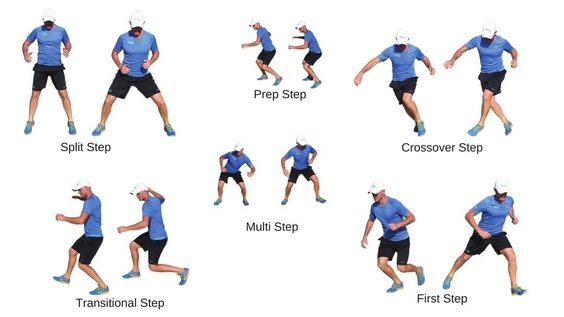
5. Spider drill:
Spiders are not only great for developing your balance and coordination, but they are also a great way to work on your footwork. You will learn how to move from one side of the court to another and move side-to-side.
Start with the ball in one hand, your opposite hand on your waist, and your opposite leg back. We recommend you begin by taking very small steps forward with your lead foot, then bring your other foot forward and repeat until you have covered the entire court distance.
Next, make sure that you keep both feet planted firmly on the ground while moving around the court. You can do this by putting one foot in front of the other or alternating between them as you move around the court.
Once you have mastered this drill, try working on it while keeping both feet planted firmly on the ground while moving around the court.
Mini Tennis Z-Ball:
This drill is one of the best drills to help improve your footwork and stability. It also helps with your balance and coordination. This drill can be done with a partner or on your own. There are the following steps of mini tennis z-ball:
1) Stand in front of a wall and place your feet shoulder-width apart, toes pointed to the side. Place both hands on the wall for support and balance.
2) With one foot in front of the other, swing your arm back so it lands between your legs with your palm facing up towards the ceiling. Make sure to keep your knees bent and toes pointed towards the floor at all times. The goal is to get used to moving this way so you can use it when moving around in a match during play.
3) Bring one arm overhead while swinging the opposite leg forward, like hitting a ball overhand against an imaginary opponent. Swing this leg back like you’re hitting a ball underhand against an imaginary opponent.
Full Z- Ball Drill Technique For Tennis Players
FAQs
Who has the best footwork in tennis?
Roger Federer, a tennis great, is renowned for having incredible footwork. To be the finest tennis player in the world, he trains very hard in every area, as he has said.
How vital is footwork in tennis?
Footwork drills are a great way to improve your game by helping you become more comfortable and confident on the court. They can also help players develop their technique and confidence simultaneously. Combined with proper warm-up exercises, these drills can make all the difference in improving your game. You can refer to the first heading of this article for more details.
Is footwork the essential part of a tennis game?
Footwork is an essential part of a tennis game, but it’s not the only thing that matters.
The footwork drill you perform in practice can be the same as what you do in a match. The difference is that when you’re playing live, you have to make decisions faster than during practice, which means that your footwork has to be more precise.
Brilliant footwork is not the game’s primary focus. Tennis serves as the game’s most crucial component. But if your footwork is solid, you’ll be an absolute marvel on the court.
Name Some Footwork Drills
Here are some other footwork drills you can use to improve your tennis footwork:
- Lateral shuffles: Shuffling sideways with the feet together, then shuffling sideways with the feet apart. Mixing sideways in a wide arc around a stationary object, like a tree or pole, is best. Shuffle in this way for three or four minutes.
- In-place shuffle: This is similar to lateral shuffles except that no lateral movement is involved. The player shuffles in place (with both feet together) for three or four minutes.
- Back-and-forth shuffle: Like lateral shuffles but this time with the feet back and forth instead of side-to-side. Do this for at least three minutes per side.
- Handswipe drill: This drill involves moving one hand forward while keeping the other hand facing forward on the court, then moving back and forth between them for at least five minutes on each side; you must keep both hands facing forward throughout this drill!
Conclusion
Take your game to the next level with these five tennis footwork drills. These drills will help you improve your coordination and footwork, leading to more powerful strokes and more efficient movement. Tennis footwork drills are also a great way to increase your speed and agility on the court, which will help you move faster when playing tennis.
These drills will also help you develop a more fluid movement pattern, which is essential in the game of tennis. To be a more fluid player, you must practice these drills regularly. Hope so this article will help you to improve your playing tennis skills.

